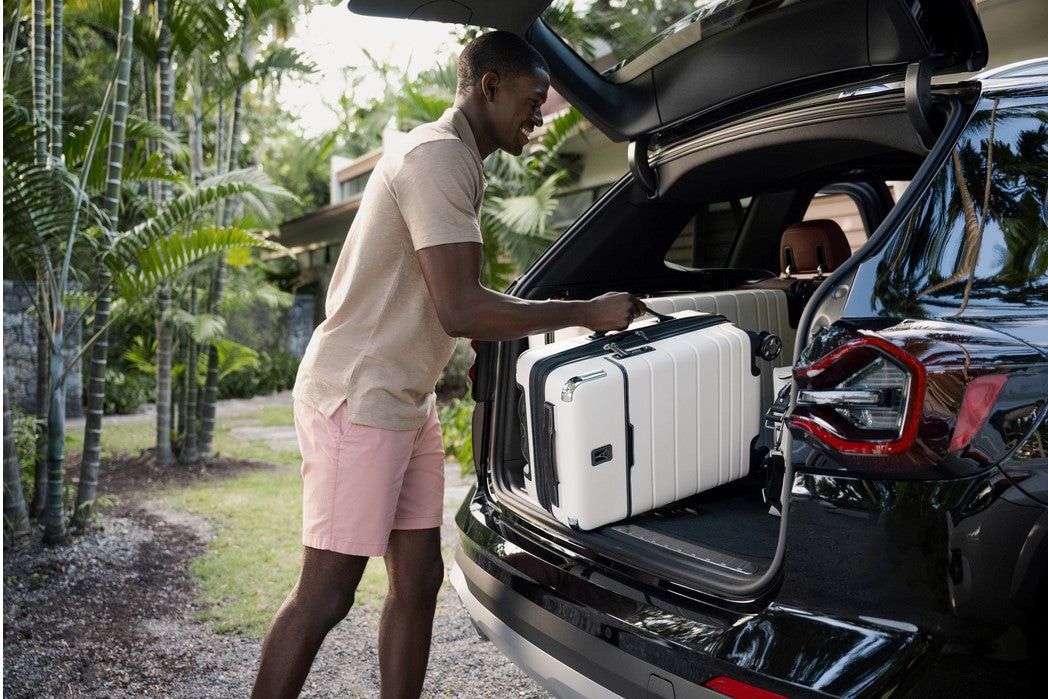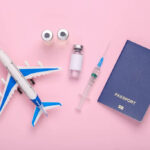Can You Fly With Glass Bottles? Yes, you can fly with glass bottles, but understanding the Transportation Security Administration (TSA) regulations and packing guidelines is important for a smooth journey. Whether you’re carrying perfume, beverages, or delicate souvenirs, flyermedia.net provides comprehensive information to help you navigate airline policies and ensure your items arrive safely. Discover expert tips for secure packing, learn about restrictions on liquids, and explore how to travel confidently with glass items on your next flight. For more detailed insights and the latest updates, visit flyermedia.net, your trusted source for air travel essentials, airport security, and aviation rules.
1. Personal Care Items: What’s Allowed in Your Carry-On?
Navigating TSA regulations for personal care items can be tricky. Here’s a breakdown of what you can and cannot bring in your carry-on:
- Hairspray: Yes, including powdered and aerosol sprays, but must be in containers of 3.4 ounces or smaller.
- Hair Gel: Yes, but must be in containers of 3.4 ounces or smaller.
- Scissors: Yes, if they are less than 4 inches long from the pivot point.
- Electric Toothbrush: Yes, no restrictions.
- Razors: Yes, disposable cartridges are allowed. Safety and straight razors are not.
- Curling Iron: Yes, one per person, with a safety cover and protected from accidental activation.
- Makeup: Yes, liquid, lotion, gel, paste, or creams must adhere to the 3.4-ounce rule.
- Electric Razors: Yes, no restrictions.
- Nail Clippers: Yes, no restrictions.
- Perfume: Yes, but must adhere to the 3.4-ounce rule.
- Spray Deodorant: Yes, but liquid deodorants must adhere to the 3.4-ounce rule.
- Stick Deodorant: Yes, no restrictions.
- Shaving Cream: Yes, but must adhere to the 3.4-ounce rule.
2. Medical Items: Essential Guidelines for Air Travel
Most medical items are allowed on airplanes. Carrying them on is often recommended for immediate use. According to the FAA, medical devices are permitted, but here’s what you need to know:
- Needles: Yes, if accompanied by injectable medication.
- Heating Pad: Yes, air-activated or electric, as long as they don’t contain flammable liquids or gasses.
- Pill Bottles: Yes, TSA does not require medication to be in prescription bottles.
When traveling with medical items, declaring them to the TSA agent and undergoing screening is essential. Needles and liquids larger than 3.4 ounces require inspection.
3. Sporting Equipment: Navigating the Rules for Athletes and Enthusiasts
Sporting equipment rules can be strict, as many items could be used as weapons. However, some exceptions exist, as detailed by the TSA:
- Baseball Bat: No, any equipment that can be used to bludgeon must be checked.
- Balls: Yes, no restrictions.
- Hiking/Ski Poles: No, any equipment that can be used to poke or bludgeon must be checked.
- Golf Clubs: No, any equipment that can be used to bludgeon must be checked.
- Pool Cues: No, any equipment that can be used to bludgeon must be checked.
- Fishing Poles: Yes, check with the airline to determine if it meets size limitations.
- Fishing Lures: Yes, large, sharp tackle must be in checked luggage.
- Bows and Arrows: No.
- Canoe/Kayak Paddles: No.
- Longboards/Skateboards: Yes, check with the airline to determine if it meets size limitations.
- Skis/Snowboards: Yes, if it meets the size limitations; most will need to be checked.
- Tennis Racket: Yes.
4. Self-Defense Items: What You Need to Know Before You Pack
Self-defense items are generally not allowed in carry-on luggage due to their potential to cause harm. The TSA provides clear guidelines:
- Knife: No, plastic or round-bladed butter knives are allowed.
- Pepper Spray/Mace: No, only allowed in checked luggage and must meet specific requirements.
- Bear Spray: No.
- Taser: No, in checked luggage, they must be inoperable and not contain lithium batteries.
- Pocket Knife: No.
- Brass Knuckles: No.
5. E-Cigarettes and Vaping Devices: Guidelines for Carry-On Luggage
Vaping devices have specific rules that might surprise you. The FAA emphasizes safety regulations for these items:
- Cigarettes: Yes, you may not smoke cigarettes on the plane.
- Disposable Vape/Pen: Yes, you may not use the vape on the plane. Lithium batteries must not exceed 100 Wh.
- Cartridge Vape: Yes, you may not use the vape on the plane. Lithium batteries must not exceed 100 Wh.
- Loose Tobacco: Yes, flying internationally, there are import rules to follow.
- Cigars: Yes, you may not smoke cigars on the plane.
- E-Cigarettes: Yes, it may not be used on the plane.
- Pipes: Yes, they are for tobacco use only; traces of other drugs can lead to confiscation, fines, and more.
6. Food and Drink: Bringing Snacks and Beverages on Board
Airport food can be expensive, so bringing your own food is a great way to save money. Most food items are allowed through security, but there are limitations, especially concerning liquids, gels, and creams, which must be under 3.4 ounces.
7. Can You Bring Glass Items on a Plane, and How to Pack Them Safely?
Yes, you can bring glass items on a plane, but it’s crucial to pack them safely. According to TSA guidelines, glass items, including picture frames, are allowed if they can be securely wrapped and fit in your carry-on.
 Close-up of a person carefully wrapping a glass bottle with bubble wrap and packing it into a suitcase for air travel
Close-up of a person carefully wrapping a glass bottle with bubble wrap and packing it into a suitcase for air travel
Carry-on luggage is generally safer for glass items, as checked baggage undergoes rough handling. Here’s how to protect your glass items:
- Wrap Securely: Use clothing or bubble wrap to cushion the items.
- Fill Empty Spaces: For bottles and glasses, fill the glassware with paper or soft clothing before wrapping them.
- Multiple Layers: Wrap the items in two or three layers of paper and then in clothing.
Snow globes are subject to carry-on liquid rules and must fit into your quart-sized bag. Larger snow globes should be packed in checked luggage to avoid confiscation.
8. Carry-On Liquid Rules: What You Need to Know to Avoid Hassles
Understanding carry-on liquid rules is essential for a smooth security experience. The TSA’s 3-1-1 rule is the standard:
- All liquids must be in containers no larger than 3.4 ounces (100 milliliters).
- All liquid containers must fit into one clear, quart-sized bag.
- This includes liquids, gels, and creams.
Medically necessary liquids and liquid foods for infants are exempt from this rule, but be sure to inform the TSA officer. For toiletries, consider solid alternatives like soaps, deodorants, and shampoos to minimize liquids. Some carry-on luggage, like the Travelpro® Platinum® Elite Carry-On Spinner and the Crew™ Classic Carry-On Spinner, include removable TSA-compliant toiletry bags for easy access.
9. What Can’t You Bring on a Plane? A Comprehensive List
Knowing what is prohibited is just as important as knowing what is allowed. Here are some items you cannot bring on a plane:
- Firearms, Ammunition, and Fireworks: These are strictly prohibited.
- Knives and Safety Razors: All knives, including pocket knives and Swiss Army knives, and safety razors are not allowed. Straight razors and replacement blades are also prohibited.
- Most Tools: Tools that could cause harm are not allowed in carry-on luggage.
- Certain Foods: If traveling internationally or from Hawaii to the US mainland, meats, vegetables, and plants may be prohibited.
Always check the TSA website before packing to ensure you comply with the latest regulations.
10. Frequently Asked Questions About Flying with Glass Bottles
10.1. Can I bring wine bottles in my carry-on?
Yes, you can bring wine bottles in your carry-on, but they must comply with the TSA’s 3-1-1 liquid rule. Each bottle must be less than 3.4 ounces (100ml) and fit in a quart-sized bag. If the bottles are larger than this, they should be packed securely in your checked luggage.
10.2. What’s the best way to pack glass bottles to prevent breakage?
To prevent breakage, wrap each glass bottle individually in bubble wrap or clothing. Place them in the center of your suitcase, surrounded by soft items. You can also use specialized bottle protectors for added safety.
10.3. Are there any restrictions on the type of glass bottles I can bring?
There are no specific restrictions on the type of glass bottles, but TSA officers have the final say on what is allowed. Ensure the bottles are securely packed and do not contain prohibited items.
10.4. Can I bring a glass souvenir from my travels?
Yes, you can bring a glass souvenir. Wrap it carefully in bubble wrap or clothing and place it in your carry-on or checked luggage, depending on its size and fragility.
10.5. What happens if a glass bottle breaks in my luggage during the flight?
If a glass bottle breaks, it can damage other items in your luggage. To minimize damage, pack the bottle securely and consider using a waterproof bag to contain any spills.
10.6. Can I bring homemade preserves in glass jars?
Yes, but homemade preserves are subject to the TSA’s liquid rules. If the jars are larger than 3.4 ounces, they must be packed in your checked luggage. Ensure they are properly sealed to prevent leaks.
10.7. Are glass baby bottles allowed in carry-ons?
Yes, glass baby bottles are allowed in carry-ons. They are exempt from the 3.4-ounce rule, but you may need to declare them to the TSA officer.
10.8. Can I bring essential oils in glass bottles?
Yes, essential oils in glass bottles are allowed, but they must comply with the TSA’s liquid rules. If the bottles are larger than 3.4 ounces, pack them in your checked luggage.
10.9. What should I do if TSA questions my glass items at security?
If TSA questions your glass items, remain calm and explain what they are. Be prepared to open your bag for inspection. TSA officers have the final say on what is allowed through security.
10.10. Where can I find the most up-to-date information on flying with glass bottles?
You can find the most up-to-date information on the TSA website or by visiting flyermedia.net. These resources provide detailed guidelines and updates on travel regulations.
Conclusion: Your Guide to Flying with Confidence
Navigating airline regulations can be complex, but with the right information, you can travel with confidence. Whether you’re packing personal care items, medical necessities, or delicate glass bottles, understanding the TSA’s rules is key. Flyermedia.net is your go-to source for comprehensive, up-to-date information on all aspects of air travel.
Ready to explore the world of aviation and travel with ease? Visit flyermedia.net today to:
- Discover Expert Tips: Learn how to pack efficiently and securely.
- Stay Informed: Get the latest updates on airline policies and TSA regulations.
- Plan Your Journey: Find resources for flight training, aviation news, and career opportunities.
Don’t let travel uncertainties hold you back. Visit flyermedia.net and embark on your next adventure with confidence. Fly high with flyermedia.net
